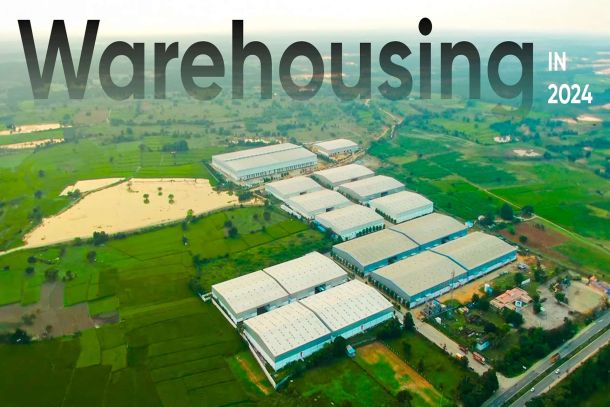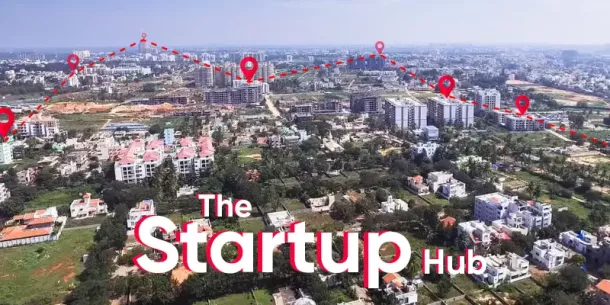For professionals and corporates across the world, the term “coworking” has become synonymous with innovative and new modus operandi of workspaces. The industry of coworking, managed, and shared office spaces has grown considerably by over 30 percent in the last decade and this industry is further projected to double by 2025, globally.
History of Coworking Spaces: from 2005 to 2022
To dive into the present and future of this industry, it is essential to understand the lineage of coworking spaces, which can be traced back to 1995 in Berlin, Germany. The first pseudo-coworking space was called C-base, which accommodated 17 computer engineers with an aim to bring computer enthusiasts together, providing them with facilities such as electricity, air conditioning, and equipment necessary for the “hackerspace”. However, there were multiple such spaces during that time, but the term “coworking” was first coined in 1999 by Bernard Dekoven, a game designer, author, lecturer, and fun theorist based out of the US. However, at that time “coworking” was a word to describe the way of working rather than a place of working. Interestingly, the ideology still holds relevance, as it is the desire to increase collaboration, and networking, remove linear hierarchies, rigid cubicles, and mundane work culture. The first coworking space in its current form opened in 2002 in Vienna CBD and was called “Schraunenfabrik”, which hosted people from diverse fields such as architecture, PR, IT start-ups, and freelancers. In the US, Coworking spaces opened in silicon valley to host brilliant IT minds in 2005, and in the years that followed, tonnes of organizations started leasing out such spaces.
Growth of Coworking Spaces in India
Over the past decade, the rise of coworking spaces in India is primarily in tier 1 cities and the traction is driven by the need for low-capex and flexible work space for start-ups and freelancers. Cost benefits include flexible tariffs, pay only for what you use and rent, no overheads such as, internet, utilities, tech support etc, and no infrastructure maintenance and repair. These coworking spaces offer numerous advantages over conventional leasing options as conventionally corporates use to lease out spaces bigger than their requirements, with a plan to expand in the future. Though these decisions were driven by industry statistics and companies’ CAGR, it often resulted in sub optimal utilization of space. This spatial bottleneck can be greatly managed with the help of managed offices offering better leasing options catering to current requirements, irrespective of the company's future plans. In essence, these coworking places are allowing companies to concentrate on their fundamental business minus the hassle of managing real estate. Some of the key players in the market include 91 Springboard, Awfis, wework, innov8, The Work Address, Redbricks, among others.
Unprecedented Boom in Demand
The major paradigm shift of coworking spaces happened in 2020, as the pandemic hit every aspect of our lives, the forced remote work model threw the traditional office space model completely off-guard. The pandemic made it evident that work can be easily done from home or rather remotely and it doesn’t necessarily take elbow-touching desks and shut-door cabins to squeeze maximum productivity out. Pandemic has also resulted in reverse migration; which is where people have returned to their hometowns and now enjoy the luxury and calmness in smaller cities over the crunch of space and time in big cities. These co-working spaces provide a conducive working environment, and also offer a range of recreational activities and host several facilities such as fitness centres, common areas, cafes, libraries etc. Along with that these flexi workspaces usually work on a 24/7 schedule, which further gives time freedom to working, breaking the shackles of prosaic 9-5 routine. This inherently fits into the mind-set and lifestyle requisites of the new age employees, giving access to community culture, collaboration, and networking. This also provides substantial cost benefit to the employees as it helps in saving exorbitant home rental prices, surge in commute cost as a result of sky-high fuel prices and taxi/auto fares. Moreover, the remote working model has given due autonomy to employees in terms of accessibility to different jobs irrespective of vicinity restrictions, which are making them reluctant to jump right back into the grind of the physical office.
Shared Office Space and Coworking: Hub & Spoke
This reluctance of employees to move back to physical offices has further added to the demand for such spaces, as companies do not want to lose out on their talent. Furthermore, this working model is not only favourable to employees but also gives a much larger pool of talent to choose from to corporates. Initially corporates had to look for people particularly residing in the same city, now these corporates can look into hiring skilled candidates from any city without the worry of relocating them. In fact, while hiring for the roles in higher management this coworking space model helps in saving high reimbursements and lodging costs as well. Given these multiple benefits of shared spaces over the conventional office spaces, large corporates are partnering increasingly with flexi/co working spaces for a win-win situation. This win-win situation has led to the development of the hub and spoke model, which offers talent benefits, cost advantages, and better scalable opportunities. The model works on the principle of dedicating a central hub/office backed by a network of workstations and does not require the employees to report to corporate offices/headquarters which are usually located in metro cities. In this set up employees need to log in from their nearest workstation, which saves commute time, spiked air fares, and also boosts overall productivity.
Managed office space: fuelling growth of the coworking sector
However, MNCs are now willing to move their employees back to the city, and in order to mitigate risks, they are opting for hybrid models. This has coined the concept of managed offices, which are similar to coworking spaces but are primarily designed for larger teams and the entire process of this model is managed by third parties. These are tailored workplace solution offering state of the art infrastructure like ergonomically designed workstations, vibrant lounges, well-designed meeting rooms and break out zones to unwind and relax; which offers all the benefits of coworking space but also provides autonomy, exclusivity of space, and security of a traditional lease. Managed offices also prompted the larger organizations to offer customized and unique workspaces along with massive savings on their capital expenditure which made them agile and at low risk.
“Future looks bright!”
The rise in demand for co-working spaces, managed offices, and conventional coworking places is coming from all scales of businesses, including SMEs, start-ups and freelancers, multinational companies, and mid-large size corporates, etc. Statistically, the co-working space category is foreseeing a growth at a scorching pace globally. As per the Statista estimates, currently there are approximately 1950 co-working spaces which should be around 4200 by 2024, out of which sizable growth is driven from India, making the country one of the fastest growing coworking markets in the world. Therefore, in order to thrive in a new fluid office world it is imperative for corporations to pull out their corporate work culture out of a flux by including flexi/coworking spaces, a critical component of their future real estate strategies, and thus become “flex-able”












